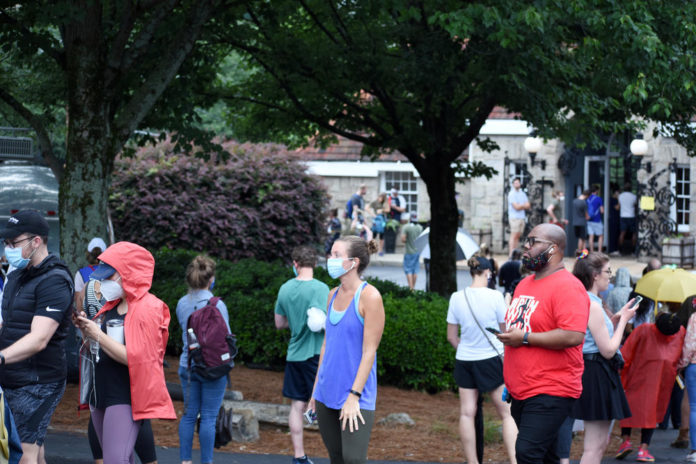
Local officials tasked with running Georgia’s elections are asking state officials to delay the qualifying period and the 2022 primary by more than a month so they can complete “complicated redistricting changes” required by law, according to a resolution obtained by GPB News.
Election workers from more than 120 of 159 counties signed on to the resolution passed unanimously by the Georgia Association of Voter Registration and Elections Officials at their annual conference in late August that asks the legislature to modify the election dates in 2022 and beyond.
Elections officials propose the 2022 qualifying period begin April 11, 2022, instead of March 7, and that the primary be held June 28, instead of May 24. Any runoff would be held July 26 under the proposal.
“This change would provide additional time for redistricting in 2022 and allow for both the general primary and runoff to be conducted when schools are not in session for 2022 and future years,” the resolution reads.
Because of delays with U.S. Census data and the legislature waiting to handle local-level redistricting until next year’s legislative session, the organization says there will not be enough time to assign voters to their new voting districts, send out precinct cards with the correct information and make other preparations for the primary election currently scheduled for May 24.
“These delays will give the counties inadequate time to make complicated redistricting changes before the commencement of candidate qualifying on March 7, 2022,” the resolution reads. “After the 2010 Census, the qualifying period in 2012 commenced on May 23, 2012, providing more than two additional months for redistricting efforts.”
The resolution also says having a May primary is difficult for counties to keep a higher number of polling places open, because schools and other large public spaces that could be ideal voting spaces are occupied.
While the legislature and governor are responsible for approving new boundary lines for federal, state and local political offices, county elections offices are the ones that actually have to make the relevant changes.
“It’s a relay race, and you’re really that last guy waiting on the baton,” Legislative and Congressional Reapportionment Office executive director Gina Wright told election officials during a training session in August.
The census results are the first leg of the race. Parsing the data and creating maps is the second leg, while legislative debate and approval of maps is the third leg. The fourth and final leg of the redistricting process will see elections offices sorting the state’s 7.7 million voters into more than 2,600 precincts in 159 counties across 180 House, 56 Senate and 14 Congressional districts, plus hundreds of local political subdivisions for voting for seats such as county commission and city council.
The stakes are high with a high-interest primary that has seen former President Donald Trump endorse his slate of challengers. Nonpartisan local officials who help run elections have faced threats, attacks and a mountain of legislative changes following the 2020 elections.
The resolution is a plea for lawmakers to ease the burden and help ensure the process is done correctly as all eyes remain on Georgia.
With Georgia adding more than a million residents over the last decade and its political fortunes narrowing to battleground status, voters could see their district lines change dramatically at the state and local level. Further complicating those changes in representation are shifts that could be made to voting precinct boundaries that make up different districts.
In both faster-growing metro Atlanta counties and smaller rural counties, elections officials will likely change existing precinct boundaries to accommodate the new political maps — splitting up larger ones, combining smaller ones or altering existing shapes to cut down on splitting a precinct between multiple districts.
Voting precincts are the geographic areas that divide voters up within a county, which is different from a polling place that can serve multiple precincts.
There are political ramifications to this ask, as well. Delaying the primary would give incumbent lawmakers more time to raise money after the end of the legislative session and less time overall for all nominees to campaign before the general election next November. After SB 202 was signed into law earlier this year, the runoff timeline was shortened from nine weeks to four.
Georgia’s General Assembly begins a special session to handle state and federal redistricting Nov. 3, and Gov. Brian Kemp has the authority to add election date changes to the call if he chooses before lawmakers gavel in. Otherwise, this would have to be debated in the regular session that begins in January, if the legislature chooses to act on it at all.
Link to updated Georgia redistricting maps: Scroll down and click “Proposed Plans” tab to see the maps.
This story comes to Fresh Take Georgia through a reporting partnership with GPB News, a nonprofit newsroom covering the state of Georgia.
For more from Fresh Take Georgia and the latest updates, follow us on Facebook and Twitter.
















